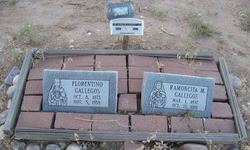In one of my recent posts I discussed “Women in Mormonism“ – let’s talk about the men today. It is a well known fact that the Mormon sect practiced polygamy. This concept fascinates me and revolts me all at the same time.
My gg-grandfather, John Henry Spencer, was converted to Mormonism while still a child in England. He came to America with his family onboard the passenger ship Sheffield in 1841. Once the family made land fall at the port of New Orleans, they journeyed up the Mississippi River and joined the “Saints” at the “Kanesville Branch,” now known as Council Bluffs, Iowa. The family was living in Kanesville when Richard Spencer, my ggg-grandfather, and John Henry’s father, was killed on 22 Aug 1851 in some sort of an accident involving a horse – the details of which are unknown to me.
That next year, in 1852, John Spencer, along with his mother Mary and siblings, set out for Utah. They traveled (along with 200 other people) with the Third Company under Captain Thomas C. D. Howell. They left Kanesville, Iowa on 7 Jun 1852 and arrived in Salt Lake City on 27 Sept 1852. The next month in October of 1852 the family relocated to Payson, Utah.
It was in Payson that John met and married Jerushia Kibbe Elmer on 4 July 1858 (sealed for time and eternity). They became the parents of 14 children.
On that very same day, John’s brother, Richard Spencer married Lucy Lodica Elmer, Jerushia’s niece. Sadly, Richard Spencer died shortly after he married Lucy Lodica Elmer. The family story that has been passed down indicates that Richard Spencer and his wife Lucy Lodica attended a dance soon after their marriage, and being over heated and perspiring, he left the hall and laid down on a pile of wood to cool off – where he contracted a “lung fever.” It has been claimed that on his death bed he asked John to marry his widow and raise a family “for him.” Accordingly, about two years after Richard’s death, John Henry Spencer married Lucy Lodica Elmer on 7 Oct 1860 (for time only). (In a nutshell – the marriage with Jerushia is for “time and eternity” and the marriage with Lucy is “only for this lifetime.”) To this union ten children were born.
It has been said that the John Henry Spencer family home in Payson was made of adobe and logs and consisted of two large rooms with each wife being allotted a room. According to family oral history: “The ‘Indians‘ always came on baking day and they were given fresh baked bread. Both of John Spencer’s wives cooked large banquets for the settlers and the Indians alike. His wives and small children helped him a great deal in “Indian affairs.“ John’s first wife, Jerushia, was a nurse and midwife; many a night she was called to go out alone in the pitch black dark to answer a neighbor’s call. She had to travel over a bridge which she dreaded to cross and to her wonder it was her husband’s other wife, Lucy Lodica who carried the light. She helped the Indian squaws sew and care for their sick. While residing in Payson, John Henry Spencer owned property on both sides of Utah Avenue. Both wives helped in clearing away debris and rocks by carrying them in their aprons. Then they planted the orchard and garden for the family.”
Along with many of the other Mormon men, John Henry Spencer was prosecuted later in life for practicing polygamy (unlawful cohabitation and adultery).
He gave bail to await the Grand Jury action. His plural wife, Lodica, also gave bond to appear as a witness. The trial transcript reads: “Bishop John Spencer of Thistle married his second wife in the fall of 1860, had been taking care of his family since. He had lived with the Indians for the last twelve years and was a poor man. His youngest child was four weeks old and they have very little means. The court asked the defendant if he had taught the Indians anything about polygamy and he said, “No”. He was sentenced to a term of four months in prison.
During that time his family suffered; however, was able to sustain themselves through the coldest winter they had experienced.
Related Articles
- The Women of Mormonism (curbowfamily.wordpress.com)










































